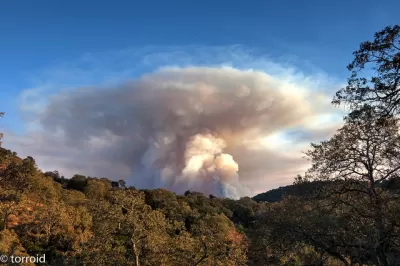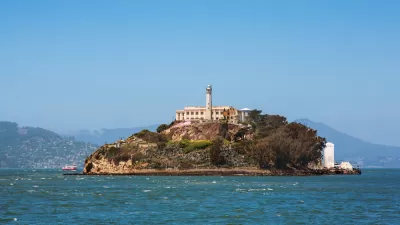This year has seen a significant uptick in wildfires across much of the South, spurred by drought and heat waves. The region's pattern of development increases the potential danger.

The fires are spreading to another region of the country. "According to the Forest Service, wildfires have scorched more than 1.4 million acres in the South so far this year — more than double the total in 2015."
Many Western states are accustomed to this reality, but some areas of the South need to adapt. Lyndsey Gilpin writes, "Fueled by possible signals of climate change such as widespread drought and record-setting heat waves, this wildfire season may be a sign of things to come for the Southeast, which is densely populated and, in some areas, less accustomed to dealing with so many vicious fires."
"The dry, hot conditions in the region have been building since early this year. The U.S. Drought Monitor shows that 24.2 million people in its Southeast region live in drought-affected areas." In addition, tropical storms, which usually account for much of the region's precipitation, stayed near the coasts this year.
The South's pattern of semi-rural development increases the threat to property. "Wildfires present such danger in the region partly because a significant amount of the population — more than in any other region — lives in wildland-urban interfaces, where development meets natural areas."
FULL STORY: The Southeast Is Becoming A Wildfire Hotspot

Planetizen Federal Action Tracker
A weekly monitor of how Trump’s orders and actions are impacting planners and planning in America.

Map: Where Senate Republicans Want to Sell Your Public Lands
For public land advocates, the Senate Republicans’ proposal to sell millions of acres of public land in the West is “the biggest fight of their careers.”

Restaurant Patios Were a Pandemic Win — Why Were They so Hard to Keep?
Social distancing requirements and changes in travel patterns prompted cities to pilot new uses for street and sidewalk space. Then it got complicated.

California Homeless Arrests, Citations Spike After Ruling
An investigation reveals that anti-homeless actions increased up to 500% after Grants Pass v. Johnson — even in cities claiming no policy change.

Albuquerque Route 66 Motels Become Affordable Housing
A $4 million city fund is incentivizing developers to breathe new life into derelict midcentury motels.

DC Area County Eliminates Bus Fares
Montgomery County joins a growing trend of making transit free.
Urban Design for Planners 1: Software Tools
This six-course series explores essential urban design concepts using open source software and equips planners with the tools they need to participate fully in the urban design process.
Planning for Universal Design
Learn the tools for implementing Universal Design in planning regulations.
Heyer Gruel & Associates PA
JM Goldson LLC
Custer County Colorado
City of Camden Redevelopment Agency
City of Astoria
Transportation Research & Education Center (TREC) at Portland State University
Camden Redevelopment Agency
City of Claremont
Municipality of Princeton (NJ)





























